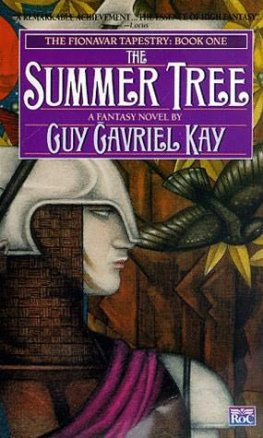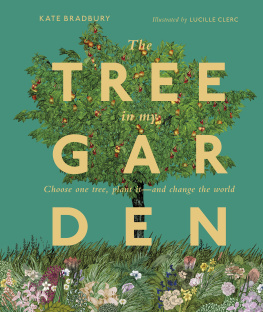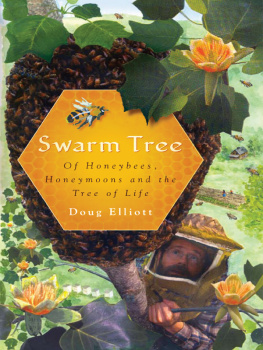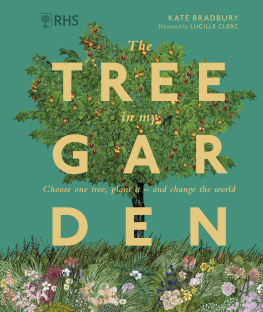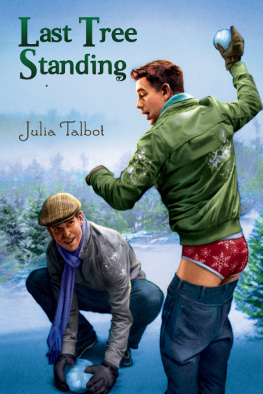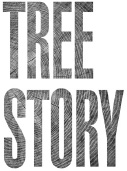
Valerie Trouet The History of the World Written in Rings
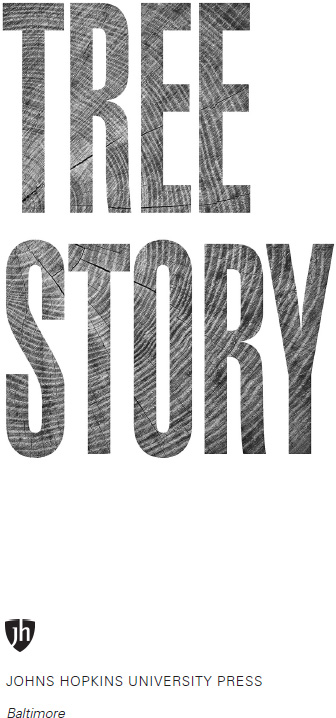
2020 Johns Hopkins University Press
All rights reserved. Published 2020
Printed in the United States of America on acid-free paper
9 8 7 6 5 4 3 2 1
Johns Hopkins University Press
2715 North Charles Street
Baltimore, Maryland 21218-4363
www.press.jhu.edu
Library of Congress Cataloging-in-Publication Data
Names: Trouet, Valerie, author.
Title: Tree story : the history of the world written in rings / Valerie Trouet.
Description: Baltimore : Johns Hopkins University Press, 2020. | Includes bibliographical references and index.
Identifiers: LCCN 2019031294 | ISBN 9781421437774 (hardcover) | ISBN 9781421437781 (ebook)
Subjects: LCSH: Dendrochronology. | Tree-rings.
Classification: LCC QK477.2.A6 T76 2020 | DDC 582.16dc23
LC record available at https://lccn.loc.gov/2019031294
A catalog record for this book is available from the British Library.
Special discounts are available for bulk purchases of this book. For more information, please contact Special Sales at .
Johns Hopkins University Press uses environmentally friendly book materials, including recycled text paper that is composed of at least 30 percent post-consumer waste, whenever possible.
To Ursula, Guillian, and John John
Instructions for living a life
Pay attention.
Be astonished.
Tell about it.
Mary Oliver (19352019)
Prologue
In 1939, the Ashmolean Museum in Oxford acquires Antonio Stradivaris legendary violin, the Messiah. One of the most valuable musical instruments in existence, its estimated value today tops $20 million. The Messiah was donated to the museum by Londons famed instrument makers and collectors, W. E. Hill & Sons, who had previously refused a blank check for the violin from car magnate Henry Ford. The Hills were determined that instead of being stashed away by a fabulously wealthy private admirer, the Messiah should be visible for the public to enjoy and future instrument makers to emulate. However, 60 years later, controversy over this remarkable gift suddenly erupted. In 1999, the Messiahs authenticity was contested by Stewart Pollens, the associate conservator of musical instruments at New Yorks Metropolitan Museum of Art. To bolster their respective arguments, both Mr. Pollens and the Hill family commissioned dendrochronologists to date the Messiah.
Stradivari built the Messiah, arguably his finest work, in 1716, and the violin remained in his workshop until his death in 1737. In the 1820s, it was sold to Luigi Tarisio, an Italian collector and dealer who traveled to Paris regularly. During his visits, Tarisio would boast about the Stradivari masterpiece to Parisian dealers, but he would never bring it with him to show. Legend has it that this prompted an eminent contemporary French violinistJean-Baptiste Vuillaume, who was a skilled violin maker himself and well known for copying previously constructed instruments. Vuillaume had the Messiah in his possession for more than 30 years, and this is at the heart of the Messiah controversy: is the Ashmolean Messiah the original Stradivari masterpiece, or is it a masterful nineteenth-century copy crafted by the deft hands of Vuillaume?
To answer this question, dendrochronologyfrom the Greek words for tree, dendros, and time, chronoscomes to the rescue. By measuring the widths of the rings in the wood of the Messiah, the violin can be dated. That is to say, we can determine when the tree from which the Messiah was built grew. The most recent rings in the Messiahs wood reveal the earliest date when the instrument possibly could have been built. If the most recent rings measured on the wood of the Messiah postdated 1737, then the tree from which it was built was still growing after Stradivaris death, and the Messiah could not possibly have been built by him. If, on the other hand, the rings predated 1716, the year that Stradivari supposedly built the Messiah, then this would support the violins authenticity.
Unfortunately, in this case tree-ring dating only added more fuel to the fire of the controversy. The dendrochronologists hired by Pollens put the last datable Messiah ring in 1738, suggesting that the tree was still growing a year after Stradivaris death. The dendrochronologist hired by the Hills family, on the other hand, dated the most recent ring in the violin back to the 1680s, predating the Messiahs 1716 recorded date of manufacture and supporting its authenticity. Both studies, however, were provisional, because they were conducted based only on photographs of the Messiah, not on the violin itself, and neither was ever published in the peer-reviewed scientific literature.
Since this quarrel unfolded, the dendrochronological dating of musical instruments, and particularly string instruments, has grown in popularity and become much more sophisticated. Advances in tree-ring measurement and image-analysis techniques, for instance, allow scientists to work directly on the actual violins. Some tree-ring laboratories, such as that at the University of Hamburg in Germany, have dated thousands of instruments, which has allowed them to build a large database of reference tree-ring chronologies against which to compare the Messiah ring-width measurements. Such reference chronologies from a wide range of tree species and geographical areas help not only to precisely date the wood of musical instruments but also to determine their geographical origin, a technique called dendroprovenancing.
In 2016, almost two decades after the Pollens-Hill dispute, British dendrochronologist Peter Ratcliff made use of his extensive reference database for Italian string instruments to put an end to the Messiah controversy. Through his research, Ratcliff found that the tree-ring pattern in the Messiah matched the pattern in another Stradivari violin, the 1724 Ex-Wilhelmj, so well that the wood from both violins could only have come from the same tree. The origin of the Ex-Wilhelmj in Stradivaris workshop is undisputed, and so Ratcliffs dendrochronological work has confirmed the authenticity of the Ashmolean Messiah (we hope) once and for all.
It is spring 1998 and I am pursuing a masters degree in environmental engineering at Ghent University in Belgium. The time has come to choose a research project for my thesis, but I am behind the curve, having just spent a semester in an exchange program in Germany. My classmates have snapped up the most interesting opportunities, especially those involving travel and research abroad. Anxious to secure a project before the summer break, I approach Professor Hans Beeckman, who teaches vegetation ecology and wood anatomy. He suggests that I consider studying tree rings in Tanzania. This is the first time I have ever heard about dendrochronology, but without much hesitation I say yes.
Until then, I had never considered that the rings in trees contained sufficient information to warrant a scientific discipline. But I had a strong desire to work in the developing world and an interest in climate change, and if dendrochronology was an avenue to combine the two while getting a masters degree, then sure, I would study tree rings. Few scientists in our field dreamt of growing up to be dendrochronologists. Most dendrochronology careers, like mine, start randomly, with serendipitous undergraduate or graduate field- or lab-based opportunities that morph over time into full-fledged careers.
Next page


